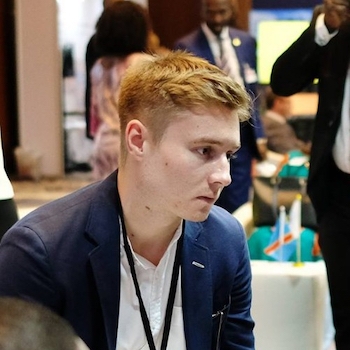
Health
Medical Marijuana: Inequalities and Contradictions
Deep in Phoenix, Arizona’s urban core, a white middle-class male uses his medical marijuana card to buy his weekly supply of pot. The area seems bleak; he doesn’t enjoy going there but come on, he needs his weed. One juicy bag, two comically large cookies and a lollipop later, he leaves the shop and gets in his car. 30 meters away, a local man in his twenties is pushed against a wall, cuffed and serenaded with a Miranda warning. He has a pocketful of cannabis and, along with around nine other Phoenicians today, he is under arrest.
Socioeconomic disparities along race and class lines in the United States are well documented and warrant little explanation. They infuse American society like a steaming cup of weed tea. It is perhaps therefore unsurprising that inequalities are evident in the fabric of a booming new industry: medical marijuana dispensary.
In June 2014, New York became the 23rd US State to legalize medical marijuana. Crowds cheered, and rightly so; 73% of Americans support legalization of the medicinal herb. The three musketeers of marijuana consumption, Colorado, Alaska and Washington, have gone a step further and legalized recreational cannabis. Currently worth $1.7 billion and growing rapidly, the weed market caters to around 1.2 million legally entitled Americans, and probably many more. Were all states to legalize the drug, this number would climb immediately to around 2.5 million.
So, clearly the road to safe, socially equitable marijuana distribution appears to be laid, right? Well apparently not. Cannabis remains illegal at the Federal level, legitimizing the cheerful mantra of white conservative America: not in my backyard! Polls tend to find that 44% of Americans would express “concern” if a pot shop opened round the corner. This is because dispensaries are lumped together with sex shops, correctional facilities and even incinerators. Bizarrely their medicinal value is ignored. When subsumed into this shady sector, residents fear that pot shops will lead to loitering, gangs, accidents and dealing. Essentially self-interested residents are scared of a reduction in property values. Home ownership is, after all, the cornerstone of the American Dream.
Early indicators challenge these sleazy associations. The pot industry is currently too young for any effect on property values to materialize, but frankly, medical marijuana dispensaries tend not to increase crime in any form. Additionally, local authorities can boast large economic gains from the dispensary creation; they collect huge taxes and fees since renting a pot shop costs 50-70% more than a traditional retail establishment.
Ultimately controversy arises when it comes to determining pot shop locations. Unsurprisingly, considering their shady reputation, the placement of dispensaries follows the general trend of putting unwanted businesses in poor, ethnic minority areas. Naturally, while affluent neighborhoods can make decisions about local land use, deprived minority areas cannot. This is because, when a US state legalizes medical marijuana, local authorities control the location and operation of facilities. In Baltimore, Washington DC and Boston, liquor stores and gun shops are overwhelmingly concentrated in the poorest and most ethnically mixed neighborhoods. The story is the same for pot shops.
Land regulation of pot shops can be so robust that it actually forces dispensaries into neighboring towns. Massachusetts is yet to open a single dispensary, despite voting over 2 years ago for the legalization of medical marijuana. Harsh and unequal zoning rules mean that there is far more land for pot shops in low-income minority areas than in wealthier, whiter ones. This phenomenon is most evident in the cities of Denver, LA and Phoenix. In Denver and LA, dispensaries are banned within 1000 feet of schools, childcare centers, parks and libraries. In Phoenix, the distance rises to 1,320 feet. Predictably, there are fewer public facilities of this kind in poor, racially mixed areas in these cities, and therefore zoning laws require that dispensaries open in areas which lack the resources and political clout to resist them. It is plain to see that dispensary location perpetuates inequality in American cities. By pushing pot shops and other ‘sleazy’ businesses into poorer areas, their residents fall into poverty traps.
The disappointing irony is that the drug is effectively only legal for a certain rank of middle-to-upper class Americans. To get a medical marijuana card, you need a stack of twenties (between 100 and 300 bucks in California) and, more notably, an official government-issued photo ID. So immigrants, the poor and the marginalized are still criminalized for marijuana possession, the first stop on a windy path taking them into the even more unequal US criminal justice system. For unskilled workers, living hand to mouth, cannabis remains as illegal as ever. When we consider that in the state of Georgia, blacks are 83% less likely to have a valid ID than whites, the racial inequality is tangible.
So, pre-existing inequalities and discrimination are reinforced and perpetuated by zoning laws which locate marijuana dispensaries in underprivileged, deprived, non-white areas. A gloomy situation has arisen in a number of America’s most progressive cities, in which wealthier M-card-waving individuals flock to poor areas to purchase their cannabis while nearby, needy individuals are being regularly arrested for possessing and selling the drug. Despite Arizona legalizing medical marijuana in 2010, Phoenix police arrest around 3,600 people a year on suspicion of cannabis possession.
It therefore seems as though the distinction between dangerous narcotic and important medication is only skin-deep.

